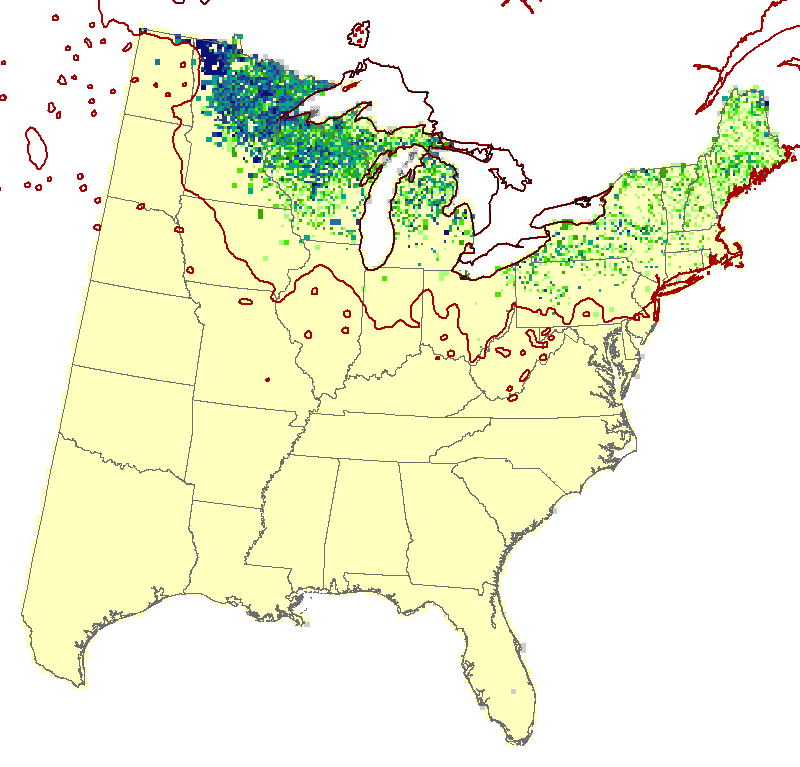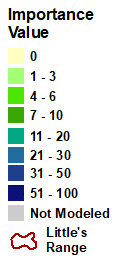quaking aspen (Populus tremuloides)
Model Reliability: High
| GCM SCENARIO | % Area Occ | Ave IV | Sum IV | Future/Current IV |
|---|---|---|---|---|
| Actual | 13.4 | 14.4 | 56825 | N/A |
| RFimp | 18.2 | 10.1 | 54268 | 0.96 |
| CCSM45 | 19.6 | 7.6 | 43633 | 0.8 |
| CCSM85 | 19.2 | 7.1 | 40094 | 0.74 |
| GFDL45 | 19.7 | 7 | 40223 | 0.74 |
| GFDL85 | 19.5 | 6.1 | 35095 | 0.65 |
| HAD45 | 19.6 | 6.8 | 39174 | 0.72 |
| HAD85 | 19.2 | 5.9 | 33072 | 0.61 |
| GCM45 | 20.4 | 6.9 | 41095 | 0.76 |
| GCM85 | 19.8 | 6.2 | 36131 | 0.67 |
Regional Summary Tree Tables
Summaries for tree species are available for a variety of geographies, in both PDF and Excel format. These summaries are based on Version 4 of the Climate Change Tree Atlas
Interpretation Guide
Quaking aspen is widely distributed (10.3% of area), dense, and with high IV and very abundant across the northern tier of forests with a highly reliable model suggesting a small decrease in suitable habitat, especially under RCP 8.5. It has medium adaptability, being able to colonize early successional habitats, and because of its high abundance, even though it is a decreaser, it rates an overall class of fair capability to deal with the changing climate. SHIFT also rates it as a decent species for infill planting.
Family: Salicaceae
Guild: pioneer, moist-site intolerant
Functional Lifeform: medium-size to large deciduous tree
| 4.7 | 0.56 |
| 0.01 |  |
MODFACs
What traits will impact quaking aspen's ability to adapt to climate change, and in what way?:
Primary Positive Traits
Temperature gradient Fire Regeneration Environment habitat specificity
Primary Negative Traits
Shade tolerance Drought Fire topkill



